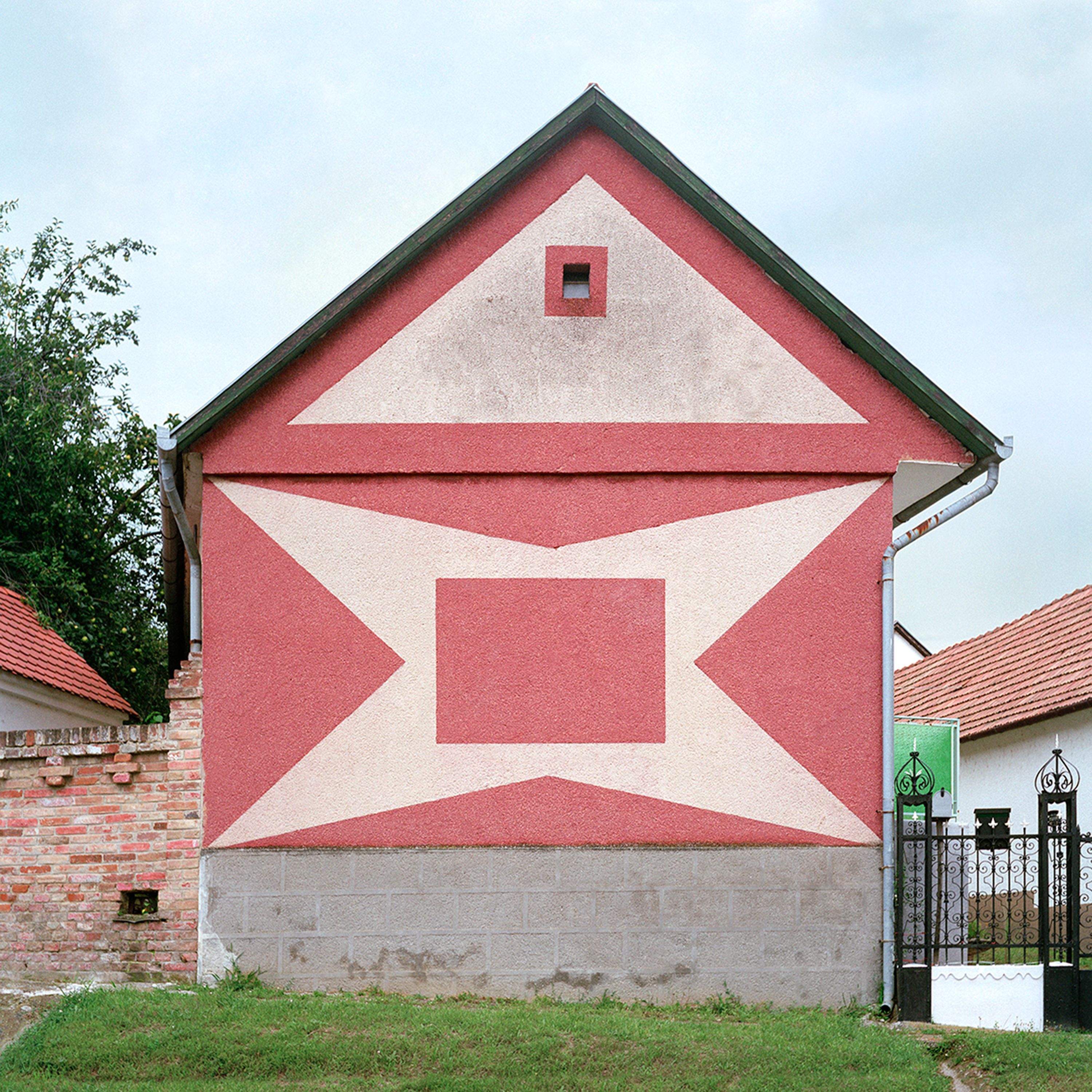Katharina Roters - József Szolnoki: Hungarian Cubes
| Venue: | acb Gallery |
| Date: | Jan 13 – Feb 24, 2017 |
Description
"Now things are different again. Now it’s more modern if there’s no pattern on it. So simple is more beautiful now? Something like that. But now I’d just have it a single colour too. Orange, with white windows. That would look really good."
The photographic material showcased at Katharina Roters and József Szolnoki’s first exhibition at the acb Gallery draws on their shared research, which they based on Roters’ typology and conducted for over a decade. The aim of their study was to collect and catalogue the etched pebbledash facades characteristic of the architecture of Hungarian villages, thereby creating a kind of virtual open air museum. The book entitled Hungarian Cubes (2014), which presents photographic material from the research alongside a collection of essays, can be regarded as an antecedent to the exhibition.
The practice of spontaneous pebbledash facade decoration, with the occasional incorporation of tiles or mirrors, was one of the most widespread cultural techniques of the Kádár era. This visual code, which almost completely “overwrote” the countryside, has, to date, remained completely invisible, however, as a kind of drifting rift between the existing and the perceived. While the traditional Hungarian peasant house with its string of adjoining rooms faced toward the courtyard, the new, square hip-roofed, cube-shaped structures had a street-orientation. These “merriest barracks” were built relatively rapidly in large numbers, with their facades of similar shapes and sizes creating a gigantic projection screen which served as the perfect surface for the re-emergence of elements that had been repressed in the culturalization process. The visual style decorating these houses – which are thought of as the countryside version of “panel housing” – was both folk and modern. It simultaneously socialized and individualized. Furthermore, in accordance with the zeitgeist, it also replaced – almost as a kind of social compulsion – a significant portion of the previously built gable-roofed houses with their ornate gable-ends. Following the appearance of cement plaster and its variations in the nineties, and the arrival of today’s new insulation materials, the pebbledash era is now drawing to its final close.
With the viewer’s gaze focused on the facades, the photographs are freed from the redundancy of cables, antennas and foliage. In this way, the geometric ornamentations of the building portraits presented in the exhibition become formal signs.
Katharina Roters (1969, Cologne) and József Szolnoki (1971, Devecser) are visual artists. Roters graduated from the Painting Faculty of the Düsseldorf Arts Academy in 1999. Szolnoki received his diploma from the Film/Television Faculty of the Academy of Media Art Cologne in 2008. In 2014, the album entitled Hungarian Cubes: Subversive Ornaments in Socialism, co-authored by Szolnoki, among others, received the DAM Architectural Book Award of the Frankfurt Book Fair and the German Architecture Museum. In 2016 – as part of their joint exhibition in Győr, entitled HACK The PaST! – the drama pedagogy project Anamnesis was realized in Salgótarján in connection to the last Rákosi Coat of Arms, which can be found there. Roters also participated in the 2016 Architecture Biennale in Venice as an exhibiting artist of the Armenian Pavilion.

